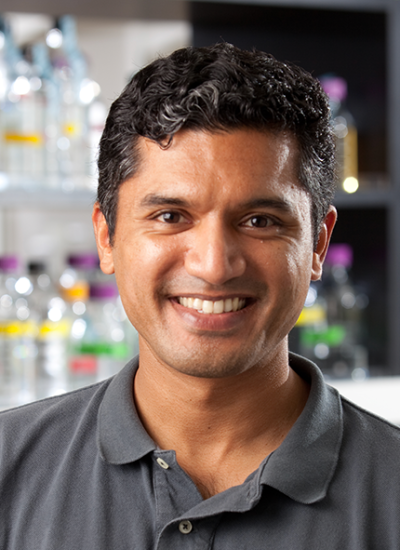Deepta Bhattacharya
Publications
Previously, we analyzed the proximal IL-4 promoter in directing Th2-specific activity. An 800-base pair proximal promoter conferred some Th2-selective expression in transgenic mice. However, this region directed extremely low reporter mRNA levels relative to endogenous IL-4 mRNA, suggesting that full gene activity requires additional enhancer elements. Here, we analyzed large genomic IL-4 regions for enhancer activity and interaction with transcription factors. The proximal IL-4 promoter is only moderately augmented by GATA-3, but certain genomic regions significantly enhanced GATA-3 promoter transactivation. Some enhancing regions contained consensus, GATA sites that bound Th2-specific complexes. However, retroviral transduction of GATA-3 into developing T cells induced IL-5 to full Th2 levels, but only partially restored IL-4 production. Thus, we propose that GATA-3 is permissive, but not sufficient, for full IL-4 enhancement and may act through GATA elements surrounding the IL-13/IL-4 gene locus.
Durable antibody production after vaccination or infection is mediated by long-lived plasma cells (LLPCs). Pathways that specifically allow LLPCs to persist remain unknown. Through bioenergetic profiling, we found that human and mouse LLPCs could robustly engage pyruvate-dependent respiration, whereas their short-lived counterparts could not. LLPCs took up more glucose than did short-lived plasma cells (SLPCs) in vivo, and this glucose was essential for the generation of pyruvate. Glucose was primarily used to glycosylate antibodies, but glycolysis could be promoted by stimuli such as low ATP levels and the resultant pyruvate used for respiration by LLPCs. Deletion of Mpc2, which encodes an essential component of the mitochondrial pyruvate carrier, led to a progressive loss of LLPCs and of vaccine-specific antibodies in vivo. Thus, glucose uptake and mitochondrial pyruvate import prevent bioenergetic crises and allow LLPCs to persist. Immunizations that maximize these plasma cell metabolic properties might thus provide enduring antibody-mediated immunity.
Humoral immunity is generated and maintained by antigen-specific antibodies that counter infectious pathogens. Plasma cells are the major producers of antibodies during and after infections, and each plasma cell produces some thousands of antibody molecules per second. This magnitude of secretion requires enormous quantities of amino acids and glycosylation sugars to properly build and fold antibodies, biosynthetic substrates to fuel endoplasmic reticulum (ER) biogenesis, and additional carbon sources to generate energy. Many of these processes are likely to be linked, thereby affording possibilities to improve vaccine design and to develop new therapies for autoimmunity. We review here aspects of plasma cell biology with an emphasis on recent studies and the relationships between intermediary metabolism, antibody production, and lifespan.
Pagination
- First page
- Previous page
- 1
- 2
- 3
- 4
- 5
- 6
- 7
- 8


